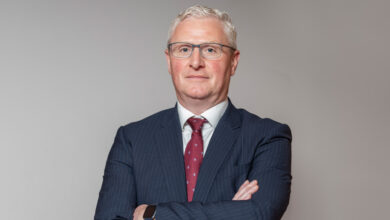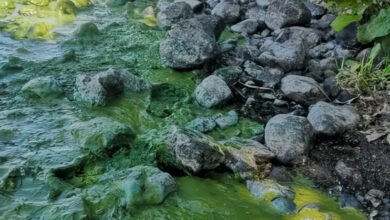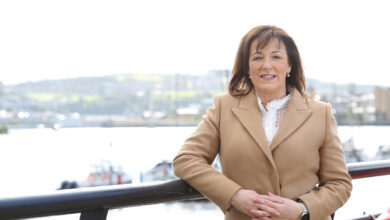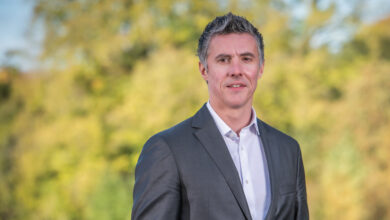Environmental policy: the EU’s perspective
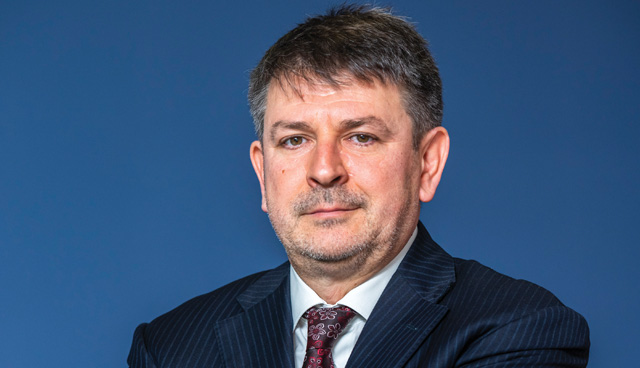
Aurel Ciobanu-Dordea, Director for Implementation, Governance and Semester in the European Commissions Directorate General for Environment, discusses how a multifaceted approach is the only answer to Europe’s climate concerns.
“The climate challenge is the greatest challenge of this generation and all the generations which will follow,” Ciobanu-Dordea states. “A single-minded focus on closely related actions to climate change will not lead to all the expected results. Usually people tend to separate the climate and environmental agendas as if they are distant issues. There is a unity of nature that makes environmental actions support climate change actions. The effectiveness of climate change policies is hampered if the unity of nature and the connection with the protection agenda is ignored.”
Ciobanu-Dordea’s responsibilities lie in the enforcement action of the Department of the Commission in Charge of Environmental Policy and their support actions mainly through funding the structural funds for environmental projects and the vetting of loans, which member states receive from the European Investment Bank for environmental initiatives. He is also in charge of governance issues, access to justice, geospatial intelligence, transparency and other issues.
He says that what is being debated in his Brussels office is similar to what is debated in Dublin or Belfast: “In a way, what is being debated in Brussels today is not very different to what is being debated in Dublin and all across Ireland. This is important because all your concerns about not leaving people behind, effectiveness, green finance and results are fully shared in Brussels. There is a convergence of interest and concern. It is only natural that we mirror, summarise and address the challenges of the member states at the European level. I hope that we can build on this convergence.”
Ciobanu-Dordea hopes that convergence can be built upon using the Political Guidelines issued by President of the EU Commission, Ursula von der Leyen in July 2019. “It is very telling that the first chapter is devoted to a European Green Deal, which has two pillars: climate change and the environment,” he says, going on to detail the three main priorities included under the environmental pillar:
1. Dealing with the biodiversity challenge. “The dire loss of biodiversity across the EU and at global level. The ambition that Ursula von der Leyen has outlined is to halt this biodiversity loss, reverse the trends and lead the world in doing the same thing. You can expect action from the Commission, hand in hand with the member states, addressing the challenges that threaten species and habitats. We have heard the signal from Ireland, Austria and France about the Amazon fires and the global deforestation phenomenon. We need to act globally and determine what we can do even beyond our trade agreements to stop deforestation. There might be legislation, which some would call extraterritorial, that would impose conditions on goods imported from third countries in order to give them access to the European market. There is much talk about what to do with regard to land degradation knowing that the treaties that founded the EU impose certain conditions for adopting legislation such as unanimity and accountability.”
2. Delivering a zero-pollution ambition. “Almost, some would say, unrealistic; how could we get to zero pollution? You can expect air and water action from the European Commission, bringing the air pollution standards to World Health Organisation (WHO) standards because there is a small gap between European and WHO standards. There will be action on industrial emissions; on pesticides, where there is a lot of concern.”
“You can expect action from the Commission, hand in hand with the member states, addressing the challenges that threaten species and habitats. We have heard the signal from Ireland, Austria and France about the Amazon fires and the global deforestation phenomenon. We need to act globally and determine what we can do even beyond our trade agreements to stop deforestation.”
3. Action on the circular economy. “The second action plan, Circular Economy 2.0, will prevent waste more effectively and secure more sustainable resource use. There will be action on micro plastics. The President has set the ambition that we should lead the world there again. We hope to work with the member states and the European Parliament to make this a reality.”
In her Political Guidelines, von der Leyen writes that she wants “Europe to strive for more by being the first climate-neutral continent” and that she will propose a European Green New Deal within her first 100 days in office. She outlines the methods by which she plans to achieve this, which include a Just Transition Fund, Cohesion Funds and the investment of €1 trillion over the next decade “in every corner of the EU” under the Sustainable Europe Investment Plan.
“You should not expect only legislative action from Brussels, and you can still do a lot without legislation. Nothing will bar us from bringing forward more legislation, but we know the reality,” Ciobanu-Dordea says. “A lot depends on effective implementation of existing rules, so you shouldn’t be surprised by the fact that we will work more and better with the existing rules. The emphasis will not only be placed on bringing forward new legislation; enforcement and compliance will continue to grow, and the President has included in her mission letters the need to pay attention to implementation and enforcement.”
The Political Guidelines also include commitments to decrease emissions by at least 50 per cent by 2030, and von der Leyen has pledged that “the EU will lead international negotiations to increase the level of ambition of other major emitters by 2021”. The President has committed herself to putting forward a comprehensive plan with the aim of raising the EU’s goal to 55 per cent for 2030. “This plan will be based on social, economic and environmental impact assessments that ensure a level playing field and stimulate innovation, competitiveness and jobs,” she writes.
Ciobanu-Dordea also suggests a possibility of that target being raised to 55 per cent for 2030 when listing out his objectives for the foreseeable future. These also include the extension of the Emission Trading Scheme to more sectors such as transport and energy and the introduction of a Climate Border Tax, “which we have to figure out how to do without breaching international trading rules”.
“A Just Transition Fund will support the laggards and those that face a higher challenge, with a strategy for green financing and turning parts of the European Investment Bank into a climate bank,” he says. “My intention is not only to reflect on how the European agenda will look in years to come but we have to look at the challenges Ireland faces with the existing obligations.
“The ambition to conclude a climate pact with lower levels of government, communities and civil society in an effort to leave nobody behind,” he concludes.


